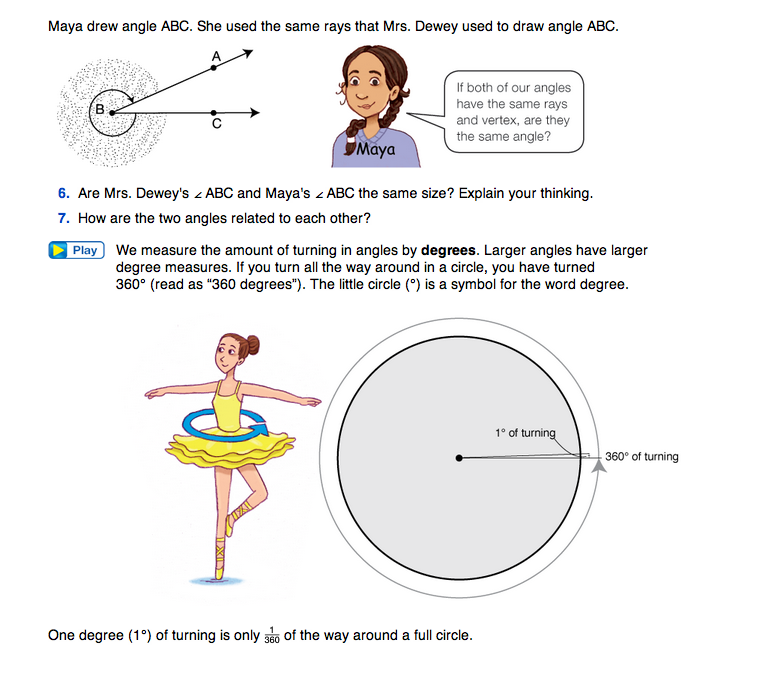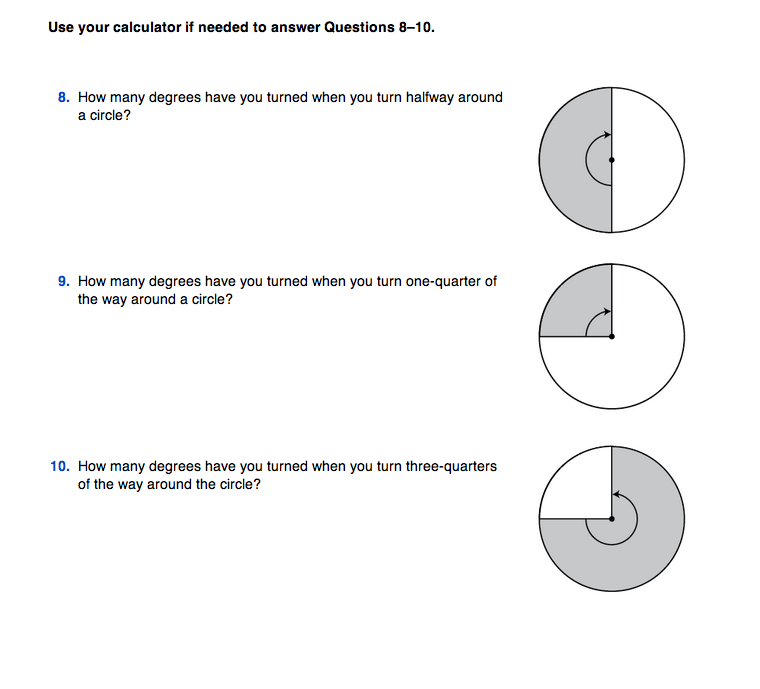Turning Through Angles
Est. Class Sessions: 1–2Developing the Lesson
Part 2. Angles and Degrees
Read the vignette in the Angles and Degrees section of the Student Guide with the class. Draw the angle shown on Mrs. Dewey's board on the Geometry Word Chart. Ask a student to label the vertex and arc shown in the picture.
Have students answer Questions 6 and 7 with a partner. Discuss students' responses with the whole class. See Content Note.
Ask:
Continue reading with the class in the Student Guide about degrees as a measure of angle rotation. Students work with partners to answer Questions 8–10. In these questions, students find the degree measures of benchmark angles, including 90°, 180°, and 270°. Encourage students to use mental math to compute the degree measures for these angles. They may use calculators if needed.
Write the word “degree” on the Geometry Word Chart. Ask students to use words and pictures to represent the meaning of degree or degrees. Make sure the symbol for degrees (°) is included on the chart. Allow the class to discuss and refine the representations shown.













